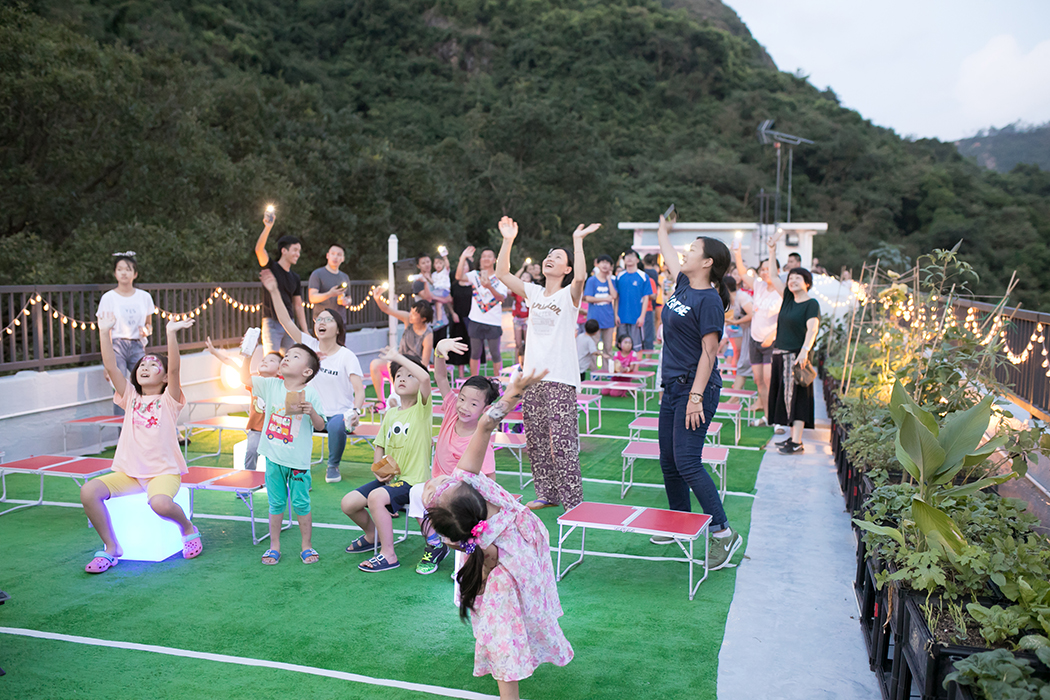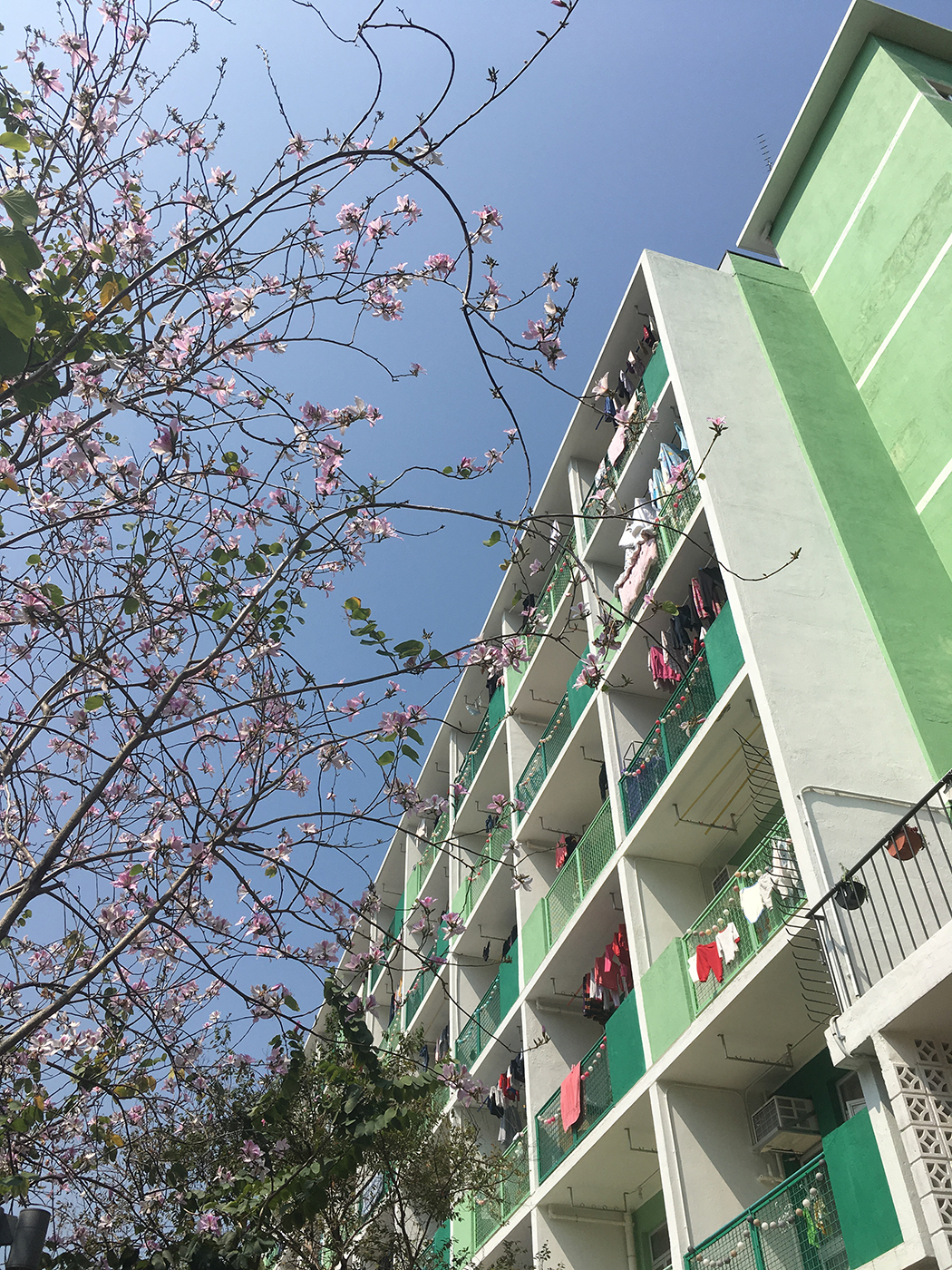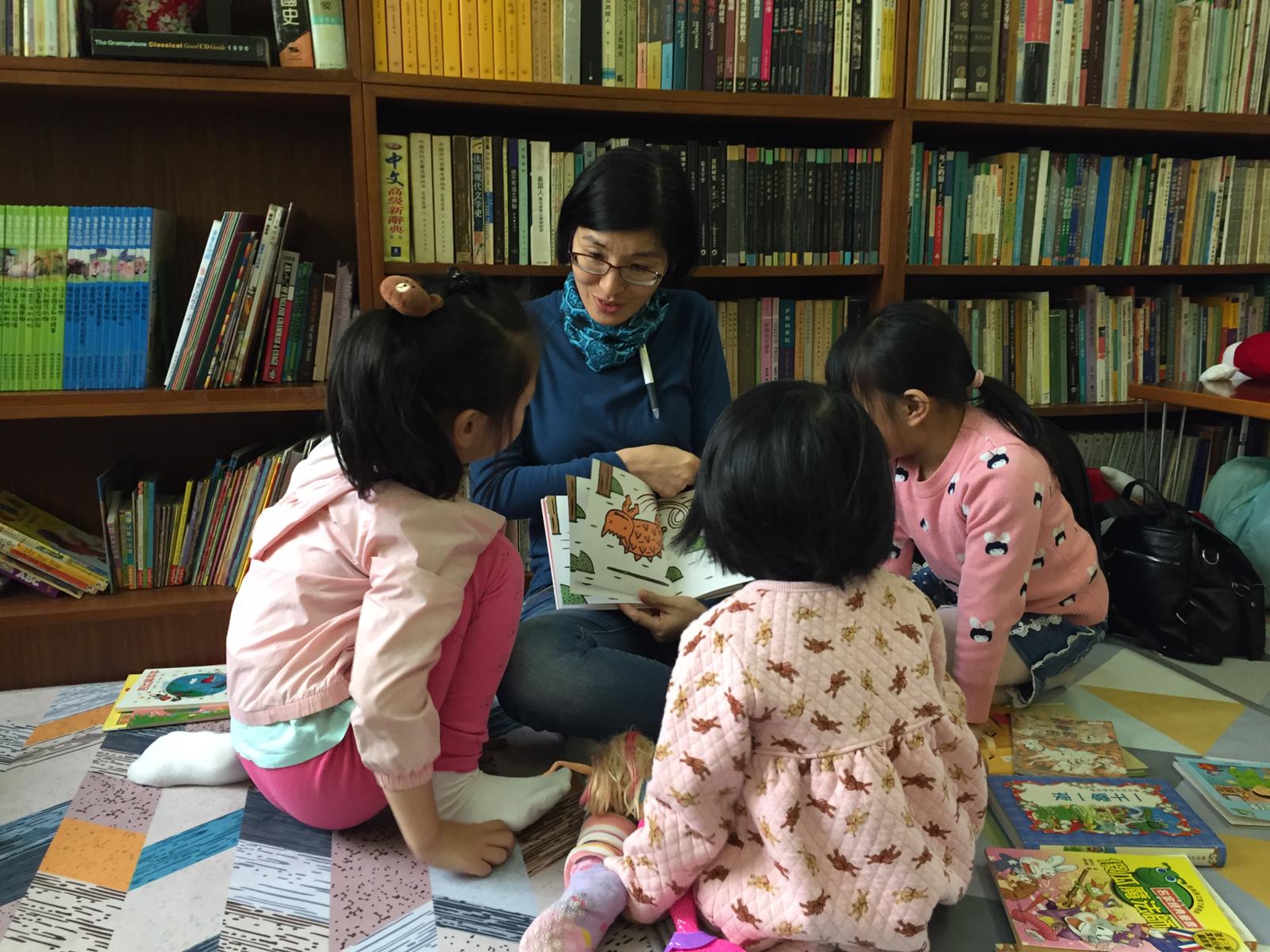Executive Summary
Hong Kong is well-known globally for being the most expensive housing market. Encapsulated in unaffordable housing are the plethora of socioeconomic issues such as domestic abuse, social isolation, and a lack of opportunities to upward mobility, to name a few -- all of which entrap grassroots families in a vicious cycle of urban poverty. In the face of this seemingly unsolvable conundrum lies the belief of Ricky Yu, founder and Chief Executive Officer of Light Be, “that every Hong Konger deserves the dignity of decent living and a chance to uplift themselves.” Starting as an “outsider” to Hong Kong’s real estate and social welfare circles, Light Be pioneered the concept of “social realty.”
Finding Opportunities in Hong Kong’s Poverty Challenges
Hong Kong is well-known globally for being the most expensive housing market. Figures regularly cited to illustrate this situation include 21 years needed for a family to save up for a home1 and spending 70 percent of their monthly income to service their mortgages2. For the 20 percent of the population who live below the poverty line3, the urban poverty they are subjected to is exacerbated by dismal housing situations. More than 200,000 people live in sub-divided units4 with a median size of 5.3 square metres5. Encapsulated in unaffordable housing are the plethora of socioeconomic issues such as domestic abuse, social isolation, and a lack of opportunities to upward mobility, to name a few -- all of which entrap grassroots families in a vicious cycle of urban poverty
In the face of this seemingly unsolvable conundrum lies the belief of Ricky Yu, founder and Chief Executive Officer of Light Be, that “every Hong Konger deserves the dignity of decent living and a chance to uplift themselves.” Starting as an “outsider” to Hong Kong’s real estate and social welfare circles, Light Be pioneered the concept of “social realty.” This concept is a new narrative to urban poverty alleviation measures that has traditionally focused on direct resource transfers to the needy. Instead, Light Be provides a platform that closely intertwines affordable housing, personal development, and community elements for families in need to empower themselves out of poverty.

Ricky Yu with a tenant family
Source: Light Be
Social Ventures Hong Kong, as Light Be’s early-stage impact investor, saw Light Be’s novel approach to urban poverty alleviation as an opportunity to illustrate social innovation in impact investment and resource aggregation. These innovations are relevant not just for Hong Kong, but also for any growing urban center in Asia facing the twin challenges of housing affordability and urban poverty
Property for Poverty
Light Be’s Light Home scheme is centered on renting apartments from socially conscious landlords and sub-leasing these apartments to single mothers with children. These apartments, known as Light Homes, have three characteristics that represent Light Be’s core values:
- Light Homes are not sub-divided units, but rather co-living units where families have their own bedrooms and share the rest of the house;
- Rents paid to the landlords are based entirely on each tenant family’s affordability, rather than being benchmarked against the market; and
- Each tenant family will go through a tailor-made tenant development plan, for them to ‘graduate’ from the Light Home scheme within three years
Since 2012, Light Be has managed over 70 Light Home units from more than 60 socially conscious landlords in 15 of the 18 districts across Hong Kong, benefitting close to 300 families. Many of these Light Homes are concentrated in the downtown neighborhoods around the Victoria Harbor, where housing prices are generally higher.
Light Housing: View of Exterior Building
Source: Light Be
Private investors form the largest pool of apartment landlords in Hong Kong. Over the years, Light Be has learned the importance of keeping our model easy to understand and hassle-free in order to engage landlords from all walks of life, from family offices to retired couples who may not be familiar with impact investing. Property investment is commonplace in Hong Kong, and Light Be combines landlords’ inherent comfort and knowledge in the property market with social good. Light Be utilizes the time-capital of the properties, such that long-term capital appreciation of the Light Home units and immediate visible social impact would de-risk the lower-than-market-rate short-term rental yields that landlords receive. During the lease, Light Be manages all aspects of the apartments, including small-scale maintenance, in addition to managing the tenants, thus incentivizing landlords to lease their apartments to Light Be and indirectly attract them to this impact investment opportunity. Light Be builds trust with landlords in two ways:
- Encouraging landlords to build direct relationships with their tenant families -- there are cases of landlords who regularly spend festive occasions with their tenants and even a landlord who created jobs in his businesses for Light Home families; and
- Allowing for turnover of apartments, so that landlords know that they can have their apartments back when the lease ends -- yet, so far, landlord renewal rate is more than 80 percent.
These two measures give landlords the assurance that their properties are managed under a well-governed system and that the impact they help create does make a difference to real people with real stories.

Rooftop Community Gathering
Source: Light Be
Creating a Better Future, Starting from Within
“Graduation” and “empowerment” are the two cornerstone concepts that set Light Be apart from traditional social services for poverty alleviation in Hong Kong. The maximum tenancy for each Light Home family is three years. Families are well-aware of this timeline from the outset. From the beginning of their tenancies, their assigned Light Home Managers will work with families towards their “graduation” with a tailor-made tenant development plan. “Graduations” come in various forms when Light Home families are ready to stand on their own two feet through their efforts during their time at their Light Homes: some families improve their finances and have the means to live in decent apartments, some families learn the art of co-living and move out with new flatmates, while some families repair their relationships with their extended families and move back home or are able to get accommodation support from their families. Contrary to expectations, only a small proportion of families “graduate” to public housing, showing Light Home families’ resilience and self-reliance in general. “Graduations” are crucial, particularly given Light Be’s limited resources, so that more families in need can get the chance to uplift themselves. By empowering families to stand on their own two feet, Light Be prevents families from relying excessively on welfare handouts, hence alleviating the strain on public funds. Currently, Light Home families take an average of two years to successfully “graduate” and move on. “Graduations” prove to society, and to families themselves, that breaking the poverty cycle is possible, challenging longstanding presumptions on urban poverty
The path to graduation involves empowering families to grasp opportunities for themselves. Consolidating prior experience in working with Hong Kong’s working poor families, we observed that while their “poverty” come in a spectrum of forms and circumstances, in general, they have the following commonalities:
- A vision deficit: a lack of hope or concept of how a “better future” could play out for them, as they become desensitized to their own circumstances.
- A community deficit: a lack of connections to a wider group of people who could support them in times of need, whether by financial, material, emotional/mental health, or network support.
- An opportunity deficit: a lack of channels to participate in mainstream society or workforce, due to constraints from family, skills, confidence, knowledge, or working environment.
Light Be’s model believes that everyone, regardless of their socioeconomics circumstances, has the potential within them to improve their lives. With the Light Home as a conduit to engage with families, the role of a Light Home Manager is to help families see their own potential, then together, work backwards to undo these deficits. A Light Home Manager is a hybrid of a companion, social worker, life coach, landlord, and supervisor -- combining carrot-and-stick strategies with compassion. Each family’s development plan includes detailed concrete targets and personal goals that families have to work towards, with the support of their Light Home Managers, who check in on their progress at least monthly. Light Home Managers sometimes help to bridge families with opportunities and encourage them to build up self-confidence and self-efficacy. Unlike traditional social welfare models, Light Be’s empowerment emphasises “give and take.” Families are expected to give a commitment to uplift themselves before they can take the resources Light Be can offer to them. After taking from the Light Be community, they are encouraged to give back to the community in their own ways, whether it is sharing their experiences with other families or organizing regular activities. We are proud to have witnessed many cases where the “give and take” policy instills a sense of dignity in Light Home families, especially in mothers who want to be a role model for their children, which fosters self-reliance and independence
Reading sessions with children
Source: Light Be
Collective Action for Urban Poverty Alleviation
Similar to Light Be’s belief in Light Home families’ potential, Light Be also believes that Hong Kong has the collective strength and resources to address urban poverty, regardless how entrenched the issue may seem. This belief is the central tenant to Light Be’s collaborative model in creating avenues for one and all to contribute to Light Be in their own ways. Apart from early-stage impact investment from Social Ventures Hong Kong and Ricky Yu himself, Light Be has received grants from Hong Kong’s most notable family foundations for capacity building and family empowerment programs. Light Be has cultivated a network of professional firms and specialist advisors across law, architecture, construction, and property development to inject social value into their specialized expertise. Light Be maintains close ties with the social welfare sector, working with like-minded NGOs and government departments to aggregate resources to support families. Light Be’s property management work to take care of Light Homes is supported by an eclectic mix of vendors, such as a network of neighborhood handymen across Hong Kong, while volunteers contribute their skills ranging from reading to design to uplift families. The effect of these partnerships not only helped Light Be to reduce operational costs, but also grow organizational capacity for Light Be to take on larger projects, such as the Sham Tseng Light Housing project, which has 45 social housing units for working poor families converted from a former textile factory staff dormitory. These partnerships represent a platform of purpose where partners can chip in to make Hong Kong a better place for all
Perhaps, Light Be’s greatest innovation lies not in its beliefs or models, but rather the mind-bending break of a deep-rooted narrative: real estate, the most valuable and sought-after commodity in Hong Kong, can be injected with a social mission to improve the lives of people facing urban poverty. “Property for Poverty” has prompted a rethink, and more importantly action, from asset owners and the government to better utilize land and space, ranging from underutilized industrial buildings to brownfield sites, to make Hong Kong’s property market inclusive for local community needs. Together, Hong Kong can create its own solutions to urban poverty and make this City a place where everyone has a decent choice on how they want to live
Works Cited
1 Demographia. “15th Annual Demographia International Housing Affordability Survey: 2019,” Demographia, Jan 21, 2019. http://www.demographia.com/dhi.pdf
2 Victor Ting. “World’s most expensive housing market is getting even pricier with mortgages in Hong Kong eating up almost 70 per cent of monthly income,” South China Morning Post, Jun 3, 2019. www.scmp.com/news/hong-kong/
3 Office of the Government Economist, Financial Secretary's Office and Census and Statistics Department. “Hong Kong Poverty Situation Report 2017,” Government of the Hong Kong Special Administrative Region. Nov 19, 2018. www.povertyrelief.gov.hk/eng/pdf/
4 Census and Statistics Department. “2016 Population By-Census, Thematic Report: Persons Living in Subdivided Units,” Government of the Hong Kong Special Administrative Region, Jan 2018. www.bycensus2016.gov.hk/data/16BC_SDU_report.pdf
5 Research Office, Legislative Council Secretariat. “Subdivided units in Hong Kong,” Legislative Council of the Hong Kong Special Administrative Region, Jun 26, 2018. www.legco.gov.hk/research-publications/
Author bio
Lehui Liang is the Head of Purpose Capital at Social Ventures Hong Kong, an Impact Purpose Organization dedicated to innovating social change for Hong Kong’s urban social issues. The Purpose Capital team synthesizes resources, both tangible and intangible, from partners across all sectors and enables these resources to have social value to enrich Hong Kong’s communities




